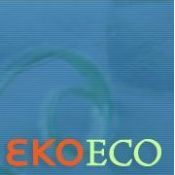On the Blog:ACR Goes to Europe
As offset quality alphabet soup goes, you can add ACR to ICROA, with a dash of IETA. Don’t toss out the QAS and keep the Best Practice competition at room temperature. This blog covers the latest in carbon offset quality assurance, with one EU-based organization heating up its ties with North American project developers.

Note: This article appeard first on the EKO-ECO Blog. Find the original post here
July 21 | Today, the American Carbon Registry (ACR) and the International Carbon Reduction and Offset Alliance (ICROA) announced that carbon offsets adhering to ACR standard are now recognized for use by ICROA members.
ICROA members – all of them offset retailers – adhere to a Code of Best Practice, agreeing to only sell credits from recognized standards: the Verified Carbon Standard (VCS), Gold Standard, the Climate Action Reserve (CAR), CarbonFix and Clean Development Mechanism/Joint Implementation (CDM/JI).
Now add to the acronym list ACR and you have most of the top-grossing standards by market share. Most. Those third-party offset standards that haven’t made the list are either under review or just too new to the voluntary carbon marketplace. And as ICROA Board chair (and ClimateCare CEO) Edward Hanrahan points out, it ain’t easy being green enough for ICROA.
Hanrahan explains that standards must apply for ICROA consideration and then go to great lengths to demonstrate that they meet ICROA’s technical and commercial criteria. ACR spent the better part of a year making its case. “We’ve been talking to ACR, as we talk to other standards, for some time,” Hanrahan says. “We’ve worked through a fairly rigorous process with ACR to get to this stage.”
In the press release, Hanrahan also referenced “ACR’s innovative methodologies in sectors such as agriculture and forestry,” which most recently include ACR’s first international methodology for projects that reduce emissions from deforestation and forest degradation (REDD).
An American in Paris?
So what does this mean for ACR – and the market generally?
As Hanrahan points out, it gives ICROA members access to another “domestic” US-based standard to sell in the US market, “because previously we’ve only been able to sell CRTs in the US market, of course.” (That’s Climate Reserve Tonnes – referenced fondly by some as “carrots” – generated under the Climate Action Reserve).
While some market observers are speculating that this might also open up a second operations base for selling ACR credits to European buyers, as well – perhaps not.
Some time ago, ICROA recognized CAR as eligible for use under its Code of Best Practice, but our State of the Voluntary Carbon Markets 2011 report found that only 2 percent of CRTs were sold to EU buyers. The rest? Almost entirely made and stayed in the good ole’ US of A. One could easily expect that ACR supply/demand patterns will follow suit.
What it does for ACR is open the door to the ICROA retail market, which – if ICROA suppliers choose to use ACR credits – could mean higher prices for the credits overall and another outlet for ACR project developers to reach a brand new pool of buyers.
“When ICROA first started, we were a large part of the voluntary market – now we’ve very much grown our share of the market,” Hanrahan points out. “So what that means is that now that very large portion of the market can be accessed by project developers.”
The Battle of the Bests
ACR’s long-awaited (and hard-won) acceptance under ICROA highlights the importance of third-party quality assurance to the voluntary carbon market. Hanrahan says this was part of the reason for the closure of another quality assurance program earlier this year – the UK Department of Energy and Climate Change’s Quality Assurance Scheme (DECC QAS) for Carbon Offsetting.
“Essentially, they recognized that ICROA is now is in the market,” he says, “and that the vast majority of the market is adhering to this independently verified code.”
In May 2011, the Head of DECC’s Low Carbon Economy Unit said in a letter to its Advisory Board members – including ICROA, “The carbon market has moved on substantially since the introduction of the QAS and we now believe it is for the market to set best practice for carbon offsetting.”
That organizations like ICROA have taken up the Best Practice torch was one of a few reasons why the QAS suffered – others including its “disappointingly low take-up” by UK businesses, lack of public exposure, small pool of member suppliers and even smaller pool of standards for suppliers to choose from (ie only CDM/JI and EU ETS allowances).
The government’s retreat from winner-picking hasn’t stopped the four former member suppliers from carrying on with the UK-specific QAS. Members Carbon Footprint, Carbon Retirement, Clear and Pure recently launched QAS part deux.
While the scheme’s new website is still under development, a press release from the group states that they will “keep flying the flag for high quality offsets despite the closure of the Government scheme that supported them.”
So as quality assurance alphabet soup goes, you can add ACR, keep QAS and follow ICROA as it integrates with IETA – including a planned fall 2011 launch of the organization(s)’ new voluntary carbon working group, seeking members soon.
Please see our Reprint Guidelines for details on republishing our articles.

